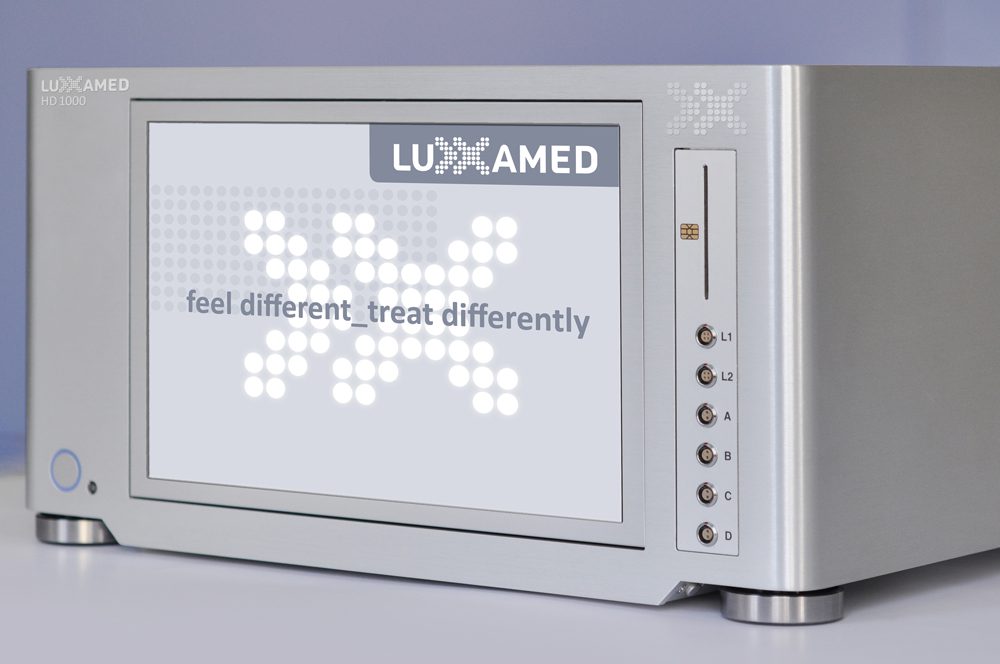Dieser Beitrag ist auch verfügbar auf:
Deutsch
Luxxamed HD1000 – Microcurrent
A microcurrent device that revolutionised therapy with the first therapy algorithm and LED light therapy.
Facts Luxxamed HD1000 at a glance
✅ Produced and distributed from 2011 to 2014 ➡️ Successor HD2000+HD3000
✅ First microcurrent device with an intelligent algorithm
✅ LED light therapy – First microcurrent device with LED light applicators
✅ Delegable power
✅ Online training system free of charge for users
✅ CE– labelled medical device (Annex IV RL 93/42/EEC)
✅ Automatic therapy sequence
✅ Measurement and display of tissue impedance values
‼️Production of the HD1000 was discontinued in 2014. Its successors were the HD2000 (stationary) and the HD3000 (mobile).‼️
Luxxamed HD1000 microcurrent device
The Luxxamed HD1000 differs fundamentally from all other electro, frequency and resonance therapy systems. Taking into account the respective metabolic state of painful tissue, a therapy programme is determined individually for the patient. Healing and regeneration processes can be activated and accelerated. Inflammatory processes(1,3) can be regulated and lymphatic circulation activated. The immune system can be strengthened, the metabolic balance is achieved more quickly. The pain relief is initiated. (2,3)
“The Luxxamed HD 1000 generates weak metabolic potentials via its feedback control in order to influence the processes taking place in the tissue organs or to control them in such a way that the physiological metabolism is achieved. Clinically, this is represented by a reduction in pain and an increase in function. Of course, no new joint is created here, for example, but a metabolism is simulated that otherwise only exists in an intact joint and is thus accompanied by freedom from pain."
References
| [1] | Cytocine changes with microcurrent treatment of fibromyalgia associated of cervical spine trauma. Fibromyalgia and Myofascial Pain Clinic of Portland, 17214 SE Division Street, Portland; Carolyn. R. McMakina; Journal of Bodywork and Movement Therapies (2005) 9, 169–176 |
| [2] | Schmerzlinderung bei Zervikalgien durch BCR–Therapie; Universität Valencia, Spanien; Universität Madrid, Spanien; R. Torres, R. Gonzalez–Pena, F. Arrizabalaga, J. Grazan-Grandell, 2011, 14 (2) 48-52 |
| [3] | Ermittlung des Einflusses der Nanophotonentechnologie auf in vitro-Zellkulturen – Masterarbeit zur Erlangung des akademieschen Grades MASTER OF SCIENCE– Anna Karutz, Dr.-Ing. habil. Christiane Wetzel; 20. Dezember 2012, Dresden, Fraunhofer- Institut FEP |





